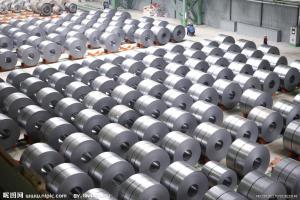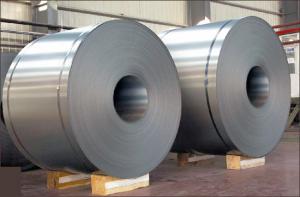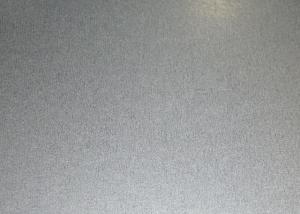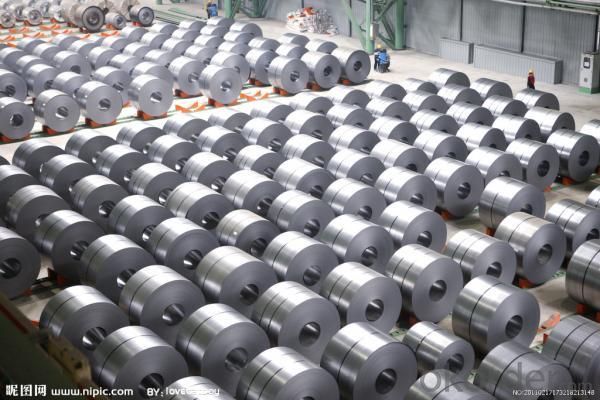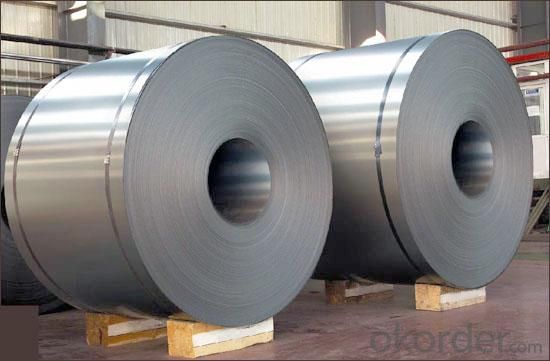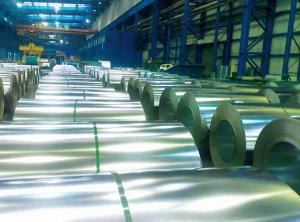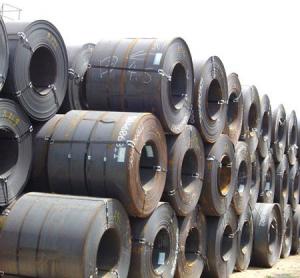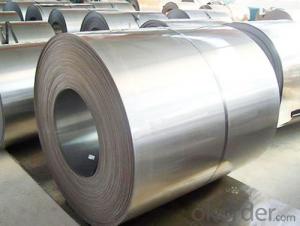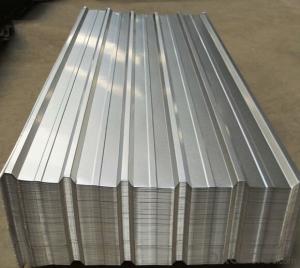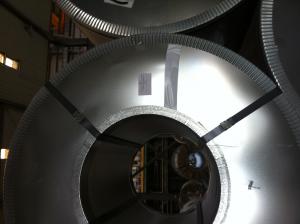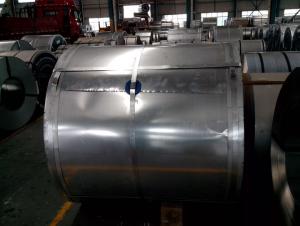Hot Dipped Galvanized Steel Coil
- Loading Port:
- Tianjin Port
- Payment Terms:
- TT or LC
- Min Order Qty:
- 50mt m.t.
- Supply Capability:
- 5000 tons per month m.t./month
OKorder Service Pledge
OKorder Financial Service
You Might Also Like
Hot Dipped Galvanized Steel Coil
Hot-dip galvanized steel coils are available with a pure zinc coating through the hot-dip galvanizing process. It offers the economy, strength and formability of steel combined with the corrosion resistance of zinc. The hot-dip process is the process by which steel gets coated in layers of zinc to protect against rust. It is especially useful for countless outdoor and industrial applications.
Product Description Of Hot Dipped Galvanized Steel Coil
|
Thickness |
0.13mm-0.7mm |
|
Width |
600mm-1250mm |
|
Zinc Coating |
30-200g/m2 |
|
Internal Diameter |
508mm/610mm |
|
Coil Weight |
3-12MT |
|
Quality |
commercial and structural quality |
|
Surface Treatment |
regular & minimum spangle, zero spangle, oiled & dry, chromated , non-skin pass , skin pass |
|
Standard |
JIS G 3302, ASTM A 653M, EN 10327 |
|
Steel Grade |
SGCC, CS, FS, SS, LFQ, DX51D+Z , S280GD |
Technical Data Of Hot Dipped Galvanized Steel Coil
|
Chemical Composition |
C |
Si |
Mn |
P |
S |
|
0.04-0.06% |
0.01-0.03% |
0.18-0.22% |
0.014-0.016% |
0.006%-0.009% |
|
Yield Strength |
(Mpa) 280-320 |
|
Tensile Strength |
(Mpa) 340-390 |
|
Elongation |
20%-30% |
|
Out-of-square |
not exceed 1% Flatness |
|
Bow |
15mmmax |
|
Edge Wave |
9mmmax |
|
Centre Buckle |
8mmmax |
|
Bending At 180 Degree |
No crack, purling and fraction |
Application Of Hot Dipped Galvanized Steel Coil
It can be widely used in transportation, light industry, civil usage and farming. It is also the perfect building material in construction for making roofing tile, steel profiles for wall partition, T-bar, studs, fireproof door, air conditioning duct and home appliance.
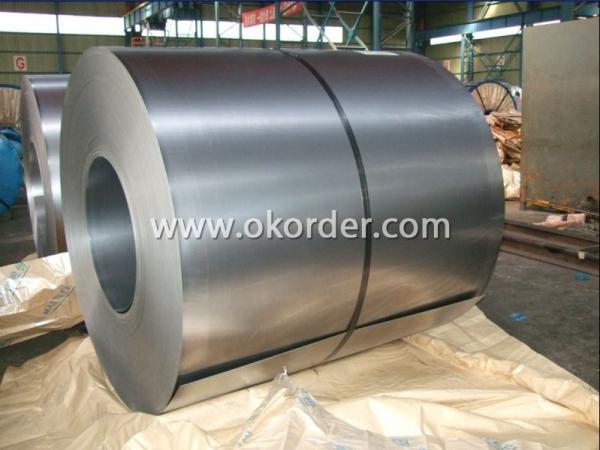
Packaging & Delivery Of Hot Dipped Galvanized Steel Coil
The packing of coils consists of anti-damp paper, PVC film, hardboard paper, steel box, strapped with steel strips, fitted with locks and edge protectors and guarantees the optimal condition of the delivered goods. Each coil can be additionally fitted with wooden/steel skids(eye to the side) or wooden pallets(eye to the sky).
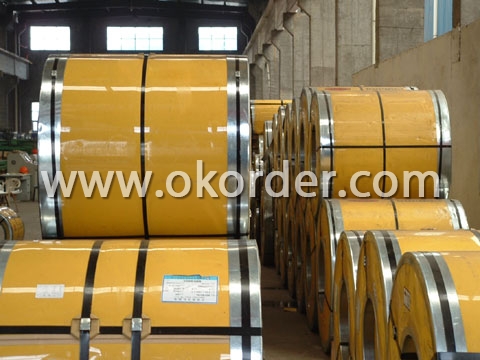
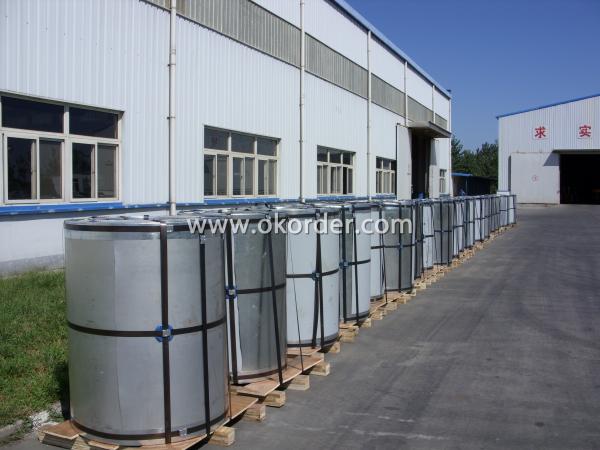
Production Flow Of Hot Dipped Galvanized Steel Coil
Production flow of hot dip galvanized steel coil - zero spangle - forward - 30 - 200g/m2 include dual uncoiler, stitcher(welder), bridle, steering unit, entry accumulator, heating & soaking furnace, jet cooling section, ceramic zinc port, cooling tower, skin pass mill, tension leveller, chromating with dryer, exit accumulator and dual recoiler.
- Q: How do steel coils compare to other materials in terms of cost?
- Steel coils are generally more cost-effective compared to other materials due to their durability, versatility, and widespread availability in the market.
- Q: How are steel coils used in the production of agricultural equipment?
- Steel coils are used in the production of agricultural equipment as they are often shaped and formed into various components such as frames, chassis, and structural parts. These coils provide strength, durability, and stability to the equipment, making it capable of withstanding the demanding conditions and heavy workloads typically associated with agricultural tasks.
- Q: what does steel have inside of it that makes it rust.I need the answer fast!!!!!!!!!
- Oxygen in the air reacts to Iron particles in steel to form Iron Oxide (commonly known as rust).
- Q: What are the different types of steel coil surface treatments for indoor applications?
- The different types of steel coil surface treatments for indoor applications include hot-dip galvanizing, electro-galvanizing, and organic coating.
- Q: How are steel coils used in the automotive industry?
- Steel coils are used in the automotive industry to manufacture various components, such as body panels, frames, and suspension parts. These coils are transformed into flat sheets or molded into different shapes to meet the specific requirements of each component. The high strength and durability of steel make it an ideal material for ensuring safety and structural integrity in vehicles.
- Q: What are the different types of steel coil packaging materials?
- Some common types of steel coil packaging materials include wooden crates, steel frames, plastic strapping, stretch wrap, and steel bands.
- Q: What are the main properties of steel coils?
- The main properties of steel coils include high strength, durability, resistance to corrosion, and the ability to be shaped and formed into various sizes and dimensions. Steel coils are also known for their excellent heat and electrical conductivity, making them suitable for various industrial applications.
- Q: I'm putting a bathroom in my basement. I'm an Ironworker btw. I wanted to go with steel studs due to the fact that they are light, and I won't have a big mess. I live in the Chicago area and they should be easy to find. Here is my question. Are they not being used anymore? I ordered 100 studs from Lowe's but they didn't have track. The delivery guy was a retired Carpenter and he told me that I got all the studs they had, they no longer stock steel studs, and they don't have track. Am I missing something? Menards didn't have track either.
- Steel studs are mainly for commercial applications on non bearing walls. 100 studs, must be one big assed bathroom. Do yourself a favor and install a pressure treated bottom plate, even if you use steel studs.
- Q: How are steel coils used in the manufacturing of airbags?
- Steel coils are used in the manufacturing of airbags to provide structural support and stability. These coils are typically incorporated into the airbag module, helping to maintain its shape and ensure proper deployment in the event of a collision.
- Q: How are steel coils inspected for yield strength?
- Steel coils are inspected for yield strength through a process called tensile testing. In this method, a small sample is cut from the steel coil and subjected to a controlled tension until it reaches its yield point. The amount of force required to deform the sample is measured, allowing for the determination of its yield strength.
1. Manufacturer Overview
| Location | Shandong, China |
| Year Established | 2010 |
| Annual Output Value | |
| Main Markets | 33.03% Southeast Asia 33.03% South America 20.18% Africa 13.76% Mid East |
| Company Certifications | ISO9001:2008 |
2. Manufacturer Certificates
| a) Certification Name | |
| Range | |
| Reference | |
| Validity Period |
3. Manufacturer Capability
| a) Trade Capacity | |
| Nearest Port | Tianjin Port, China |
| Export Percentage | 61% - 70% |
| No.of Employees in Trade Department | Above 100 People |
| Language Spoken: | Chinese, English |
| b) Factory Information | |
| Factory Size: | 10,000-30,000 square meters |
| No. of Production Lines | 10 |
| Contract Manufacturing | OEM Service Offered |
| Product Price Range | Low |
Send your message to us
Hot Dipped Galvanized Steel Coil
- Loading Port:
- Tianjin Port
- Payment Terms:
- TT or LC
- Min Order Qty:
- 50mt m.t.
- Supply Capability:
- 5000 tons per month m.t./month
OKorder Service Pledge
OKorder Financial Service
Similar products
Hot products
Hot Searches
Related keywords
